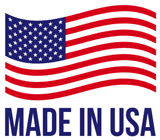The Environmental Working Group (EWG), an environmental watchdog group, released a report in 2018 that 110 million Americans may be contaminated with PFAS. However, the estimated figure may be far too underestimated.
Also referred to as per- and polyfluoroalkyl substances, PFAS are a group of man-made chemicals that are applied in various products in the consumer and manufacturing industries. To date, there are around 5,000 variations of PFAS, some are more utilized in contrast to others.
A number of the PFAS variations function as heat, water, oil, and grease resistant material. With that, since the 1940s, PFAS have been applied in products such as kitchenware, carpets, cleaning products, and paints, among many others.
Considering the many applications and uses of the chemicals, the Food and Drug Administration has regulated the application of it in products such as in food packaging products and food processing equipment for it raises health hazards.
Combining the fact PFAS is widely used in consumer products and other industrial processes, and the fact that these chemicals take a long time to break down, authorities and experts are worried that there is an increasing level of PFAS contamination in both the environment and humans.
The Problem
A majority of Americans drink a glass of water from their tap without knowing that it may be contaminated with harmful chemicals. A study from the Environmental Working Group (EWG) reveals this water crisis in the United States.
Also known as “forever chemicals”, PFAS are found to take hundreds of years, if not thousands, to break down in the environment. Aside from that, they can also find their way and stay in the human body, potentially posing health problems and hazards.
In the United States, some states have placed regulations as an attempt to address the problem with the involved contaminant. However, there are still no federal limits being set concerning PFAS, including other pollutants such as uranium, arsenic, and benzene.
PFAS chemicals are almost inseparable from human contact due to their widespread use. PFAS can be found in items such as food packaging, household cleaning products, firefighting foams, industrial and production facilities, and drinking water, in some cases.
Concerned organizations and bodies have reiterated the pressing issue in their reports and studies, stating that strict and active laws should be placed considering these chemicals accumulate over time and can lead to adverse health effects to both humans and the environment.
When individuals are exposed to PFAS, their risk of developing various types of cancer is increased. For pregnant women, fetal development is also harmed, and vaccine effectiveness is also decreased. In the US, the CDC states that nearly all Americans’ are exposed to PFAS.
The Environmental Protection Agency first became aware of the problem in 2001; however, despite their 20 years of probing the problem, there are still no tangible and enforceable nationwide laws that place the chemical in strict control and regulation.
The pressing issue concerning necessary regulations that are needed to be placed has spanned the leadership of United States presidents George W. Bush up to Donald J. Trump. These generations of administration have failed to take active action on PFAS and its risks.
The Lack of National Response
20 years ago, environmental and public health watchdogs have long raised the issue of PFAS to the authorities. According to Robert Bilott, an attorney who led a class-action lawsuit, they are still waiting for a national response after filing a case against a company that is said to contaminate an area in Ohio.
Among the many speculations of the public about the lack of national response towards the pressing issue included the government delaying the regulations to avoid substantial cleanup costs and responsibilities.
The suspicion stems from the acknowledgment that the government is among the major PFAS polluters in the country. The allegation elaborates that PFAS have migrated from the Naval Air Station Joint Reserve Base Willow Grove.
The naval airbase, according to the allegations, has dumped thousands of gallons of firefighting foam – a material that contains PFAS, over the years which resulted in the contamination of their groundwater and water supply in their respective homes.
A couple from the area, namely Frank and Lisa Penna, has submitted the case and went to trial. However, the government’s defense response in the trial relied on the fact that they can’t be held reliable since PFAS are not regulated.
Researchers also point that a part of the problem lies in Congress. When the Safe Drinking Water Act was passed by Congress in 1974, the Environmental Protection Agency was granted to regulate drinking water, to which the EPA has adopted standards concerning the removal of contaminants in drinking water.
However, over the next 20 years, water utilities and companies have expressed their disagreements, raising the issue of additional costs to removing contaminants. This led to the Safe Drinking Water Act, an amendment made in 1996.
Even if the water utilities and companies were happy with the changes made to the regulation, this left watchdogs with too little room to impose restrictions since the amendment made future restrictions and regulations unlikely.
What Can Be Done
According to Consumer Report, people can’t avoid using PFAS completely, but some steps can be adapted to reduce the use or contact. From choosing food products carefully to being mindful about the wares and materials we use at home, limiting PFAS contact is possible.
Since there are no federal regulations for PFAS chemicals in water products, there are a few states in the US that require routine testing. If you source your water from a public water provider, you will most likely receive results from those tests.
Being mindful and knowledgeable about these results and what they imply is the first step to knowing what kind of adjustments you need to make for you to adapt to a safer use of water. For instance, you can use these results in determining which filtration system to install.
Individuals or families who learn that their water has high levels of contaminants have the option of installing filtration systems in their homes as a way to prevent adverse health effects that some chemicals can bring, PFAS included. In choosing filtration systems, it is best to consult expert and professional opinion.






